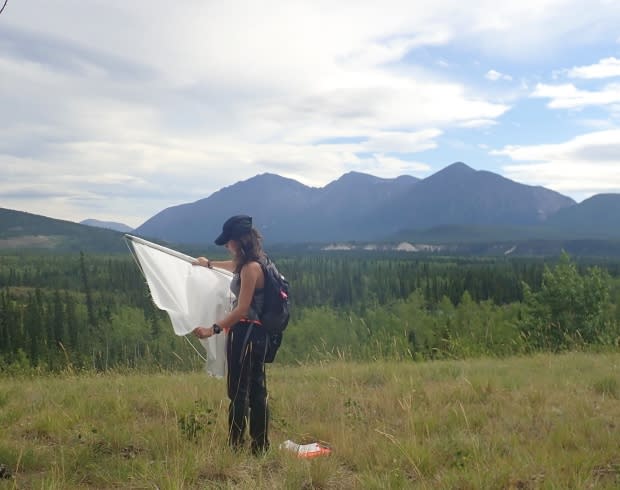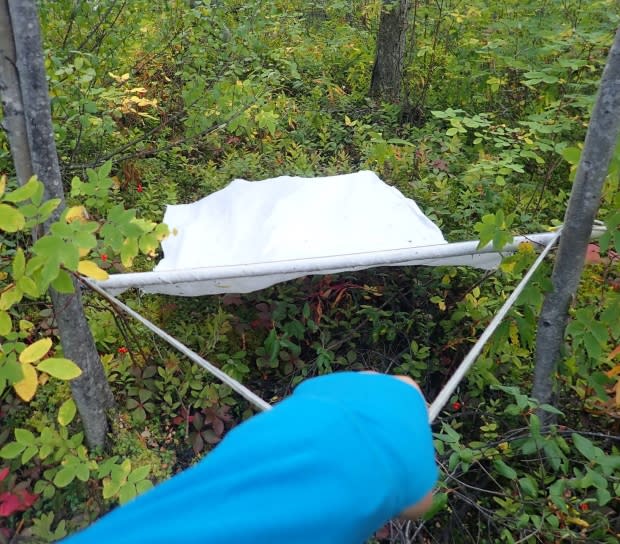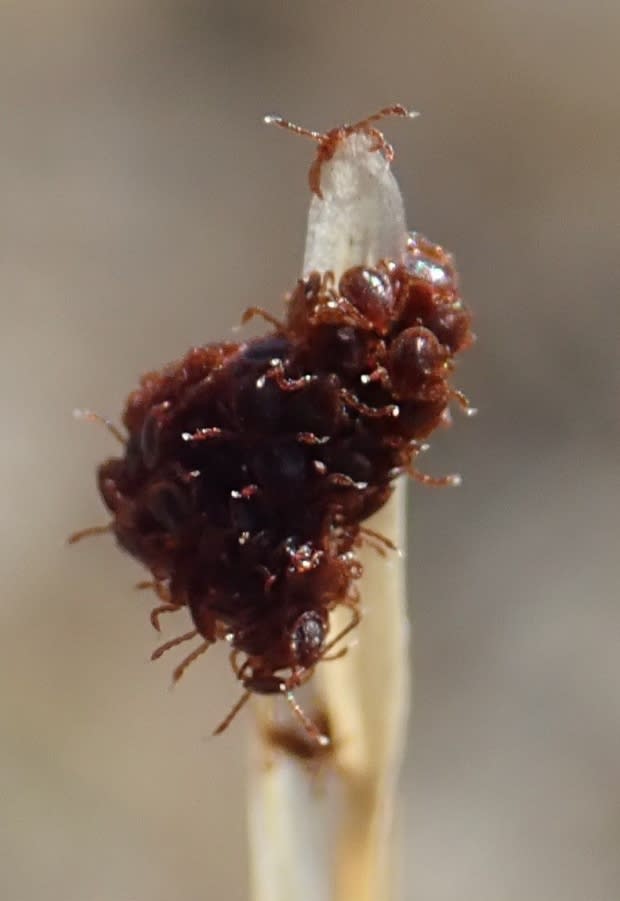Study of larvae important piece of puzzle about winter ticks in Yukon, says researcher
Emily Chenery spent many days walking through forests and fields this fall, looking for something almost microscopic.
She found what she was looking for — hundreds, perhaps thousands, of tick larva, each about the size of a grain of sand.

"I have been quite literally looking for a needle in a haystack," she said
The PhD student from the University of Toronto says this is the first time larvae have been collected and studied in the territory.
Working with Yukon's Animal Health Unit, Chenery's looking at the stage of development after the parasite hatches from an egg, but before it attaches itself to an animal.
"Up until now, we've only had half a story, which is, 'What's happening when the ticks are on the host?' But not really, 'What happens before then? How do they get onto those hosts in the first place?'"
Climate change could lead to parasite uptick
Winter ticks do not carry any diseases that affect humans, but they can hurt and even kill wildlife. Chenery says learning more about the entire life-cycle of the blood suckers might help them control the tick population in the future, if needed.

A research paper published last month in the Canadian Journal of Zoology says an increasing frequency of the winter tick in the Northeast U.S. is the suspected cause of a decline in the regional moose population.
A New York Times article quoted one of the paper's authors as saying he had found as 100,000 ticks on a single deceased moose, which likely died from anemia.
Chenery says that while winter ticks are not a currently problem in the Yukon, it's important to study them in case their numbers ever do get out of control.
"Because of climate change, which increases tick survival and development times, we might expect these little larvae to be hatching faster, surviving longer and having a longer period to get onto the host animals in the first place up here in Yukon."
Winter ticks feed on moose, elk and deer, between fall and spring. Chenery found most of the larvae in the Takhini Valley area. She discovered larvae hatch from eggs around August. They clump together and climb up some vegetation, waiting to get on a host, usually an ungulate. When they find one, they immediately take a blood meal, staying on that same host until March or April, when the adult females drop off to lay their eggs. The cycle begins again.

Chenery has been doing most of her collecting in the field, since not many hides have been donated to the Animal Health Unit for studying.
"Often I've seen it said that there's only been a few moose found in Yukon with the winter ticks, but there have also only been six hides submitted since 2011 that we have got data on, so it's very hard for us to actually pin an number on how many animals are being affected."
Before returning to Toronto for the winter, Chenery has been setting up wildlife cameras in the areas where she found most of the larvae. She hopes these cameras will capture images of moose or other ungulates that may be experiencing hair loss as a result of ticks.
Chenery will collect the cameras in May, and continue her research.

